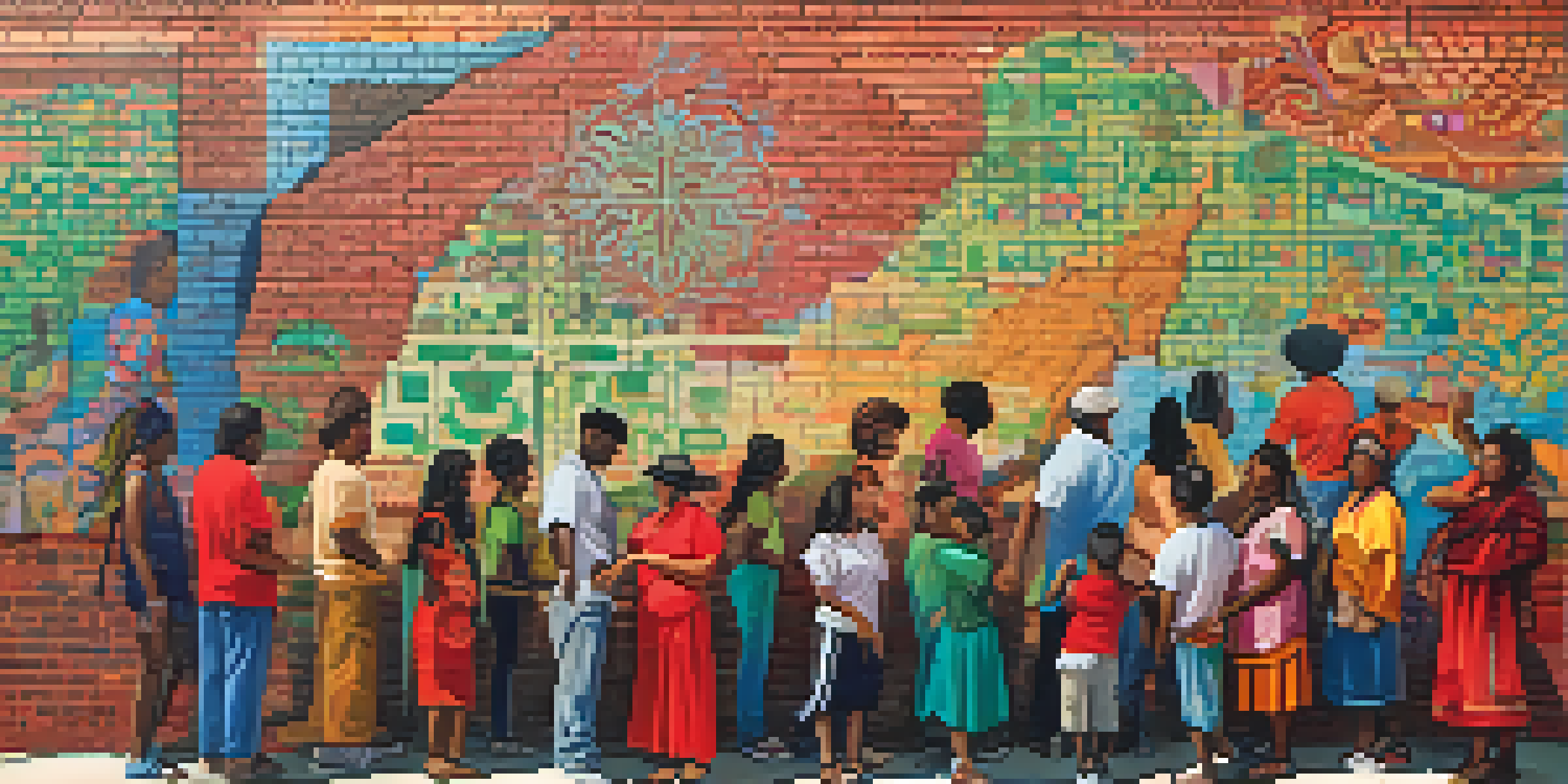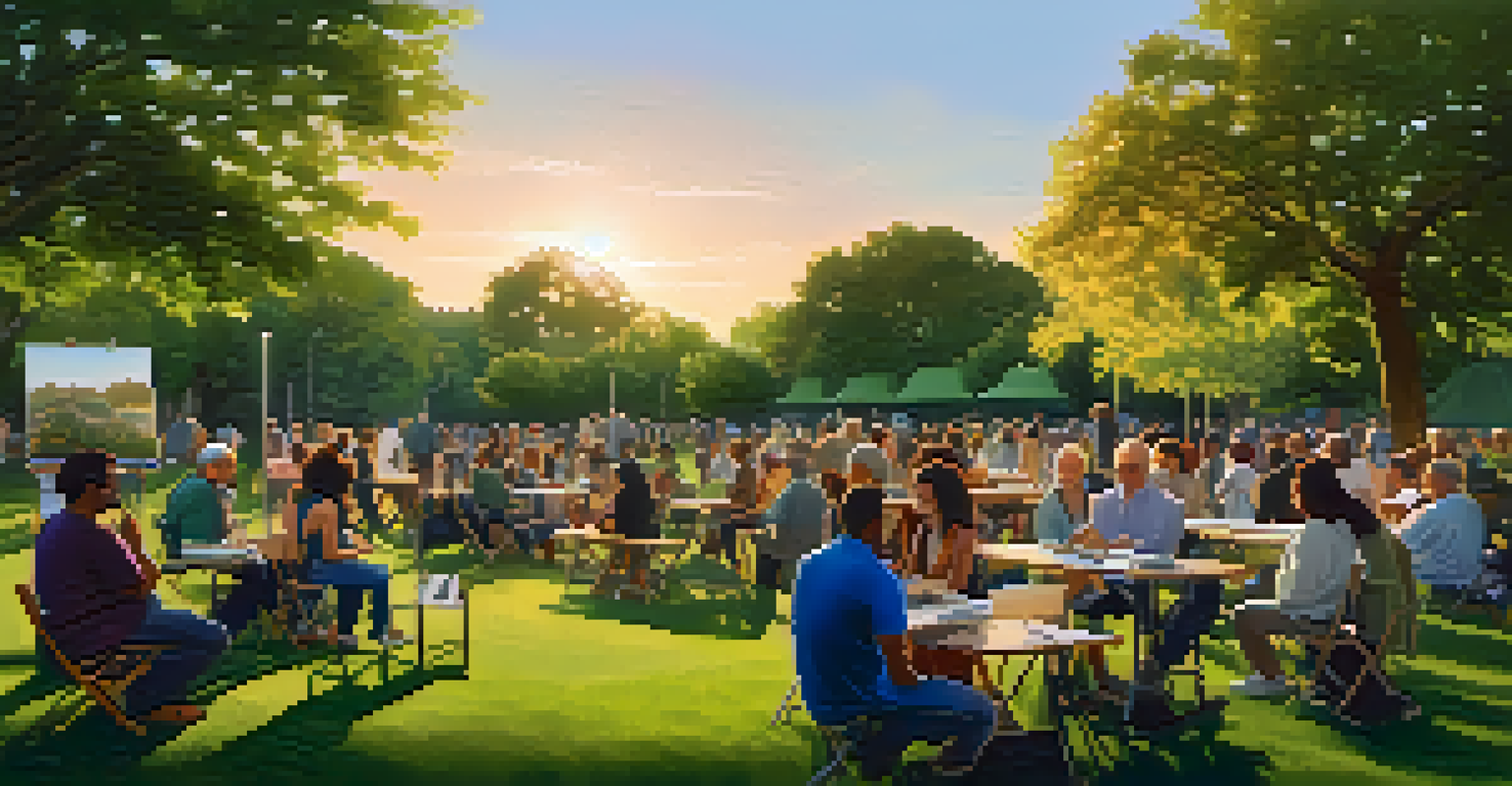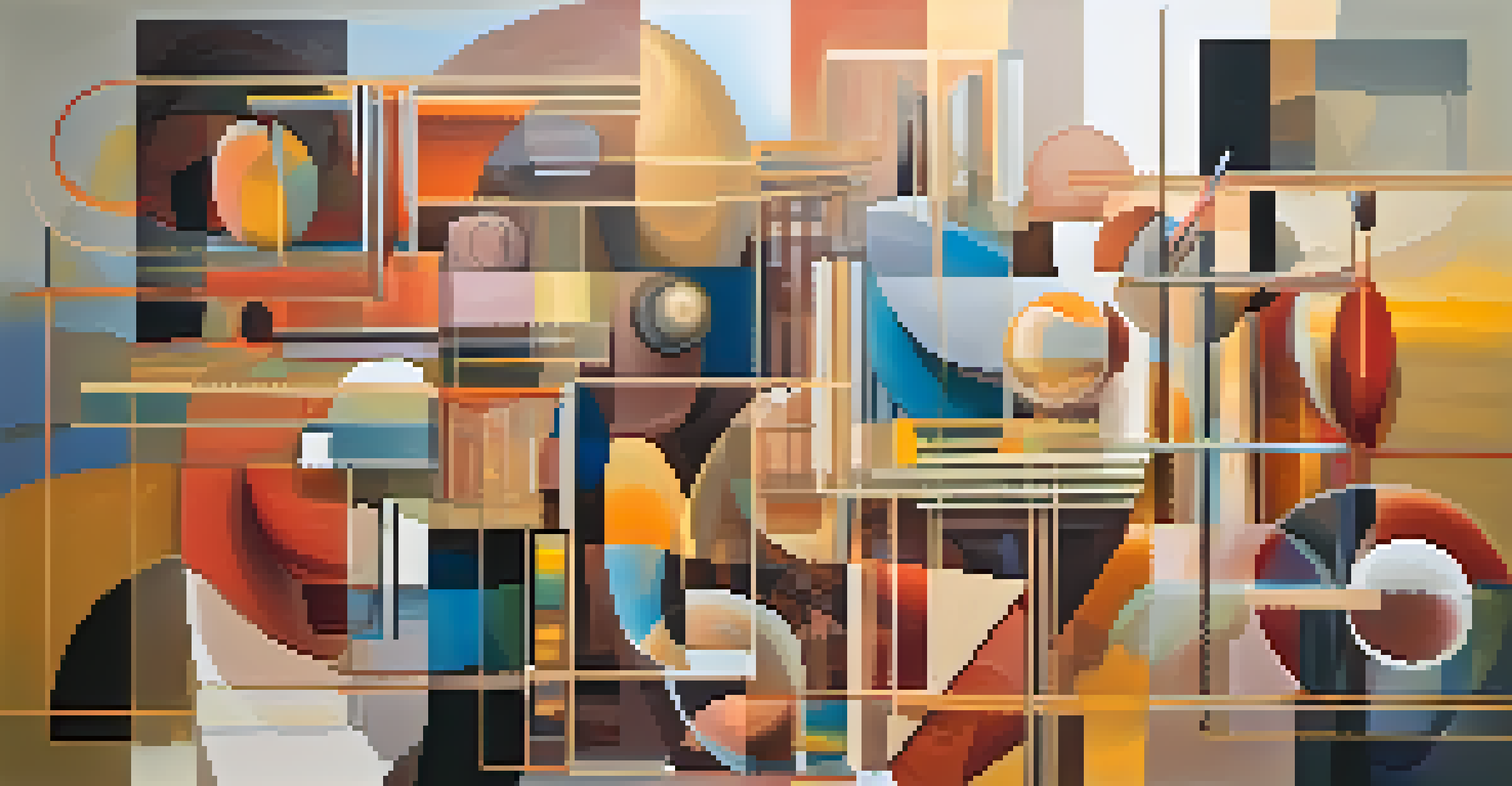Art and Identity: The Role of Public Policy in Representation

The Connection Between Art and Identity in Society
Art has always been a powerful medium for expressing identity. It reflects the diverse backgrounds, cultures, and experiences of individuals and communities. Through various forms of art—be it painting, music, or performance—people convey who they are and what they stand for.
Art is the most beautiful of all lies.
This connection is particularly significant in a multicultural society where different identities coexist. Art can serve as a bridge, fostering understanding and dialogue among diverse groups. For instance, a community mural may tell the story of a neighborhood’s heritage, inviting residents to engage with their shared history.
However, representation in art is often influenced by external factors, including public policy. How are artists supported? What funding opportunities exist? These questions highlight the role of governance in shaping the cultural landscape and the identities that are represented within it.
Public Policy: A Catalyst for Cultural Representation
Public policy plays a crucial role in determining which voices are amplified in the arts. Policies that prioritize funding for diverse artistic initiatives can lead to richer, more inclusive representations of identity. This is essential in a world where marginalized voices often struggle to be heard.

For example, government grants directed towards underrepresented artists can create opportunities for exploration and expression. When policy-makers recognize the value of diversity in art, they not only enrich the cultural fabric but also promote social cohesion.
Art Reflects and Shapes Identity
Art serves as a powerful medium for expressing diverse identities and fostering understanding in multicultural societies.
Moreover, these policies can set a precedent for private organizations and institutions to follow. When public entities champion inclusivity, it encourages a ripple effect throughout the community, fostering an environment where all identities are valued and celebrated.
Challenges in Policy Implementation for Artistic Representation
While public policy can support representation, challenges often arise in its implementation. Budget constraints, bureaucratic hurdles, and shifting political priorities can hinder efforts to promote diverse artistic expressions. This can lead to underfunded programs that fail to reach their intended audiences.
The role of the artist is to ask questions, not to answer them.
Additionally, there may be a lack of awareness or understanding of the importance of diversity in the arts among policymakers. Without advocates who can effectively communicate the value of representation, essential programs may not receive the attention they deserve.
It's crucial for artists and communities to engage with these challenges actively. By advocating for policy changes and demonstrating the impact of arts funding, they can help shape a more inclusive cultural landscape.
Successful Examples of Policy-Driven Representation
Many cities and countries have recognized the importance of public policy in promoting artistic representation. For instance, initiatives like public art programs and community grants can significantly enhance the visibility of underrepresented artists. These programs not only provide funding but also foster collaboration among different cultural groups.
Take the example of the National Endowment for the Arts in the United States, which supports diverse artistic projects across the nation. Their commitment to funding initiatives that showcase a variety of cultural narratives has helped amplify the voices of many marginalized communities.
Policy Influences Artistic Representation
Public policy plays a crucial role in amplifying marginalized voices in the arts through funding and support.
Such successful policies serve as models for other regions, illustrating how strategic investment in the arts can lead to a more equitable representation of identity. They highlight the potential for art to be a transformative force within society when supported by thoughtful public policy.
The Role of Community Engagement in Art Policy
Community engagement is essential for effective art policy. When local voices are included in the decision-making process, policies are more likely to reflect the needs and identities of those they aim to serve. This participatory approach ensures that diverse perspectives are considered.
For instance, community forums can provide a space for artists and residents to share their experiences and ideas. This feedback can then inform policy directions, leading to more relevant and impactful arts programs.
Additionally, this engagement fosters a sense of ownership among community members. When individuals feel invested in local art initiatives, they are more likely to support and participate in them, further enriching the cultural landscape.
The Future of Art and Identity Through Policy Innovation
Looking ahead, the intersection of art and identity will continue to evolve, largely influenced by innovative public policies. As society becomes more diverse, there is a growing recognition of the need for policies that adapt to these changes. This means creating inclusive frameworks that prioritize representation in the arts.
Emerging technologies and digital platforms offer new avenues for artistic expression and engagement. Policymakers have the opportunity to explore how these tools can enhance representation and accessibility, reaching wider audiences than ever before.
Community Engagement Enhances Art Policies
Involving local voices in decision-making ensures art policies reflect the needs and identities of the community.
Ultimately, the future of art and identity relies on a collaborative effort between artists, communities, and policymakers. By fostering an environment that values diverse voices, society can ensure that all identities are represented and celebrated in the cultural narrative.
Conclusion: The Ongoing Dialogue of Art, Identity, and Policy
The relationship between art and identity is an ongoing dialogue that requires active participation from all stakeholders. Public policy serves as a vital mechanism through which representation can be supported and amplified. By recognizing the importance of diversity in the arts, we can create a richer cultural landscape.
As we move forward, it's essential to keep advocating for policies that promote inclusivity and representation. Artists and communities must continue to engage with policymakers, ensuring that their voices are heard and valued.

In this ever-changing world, the intersection of art, identity, and public policy will remain a crucial area of focus. Together, we can work towards a future where every identity finds its place in the artistic narrative.